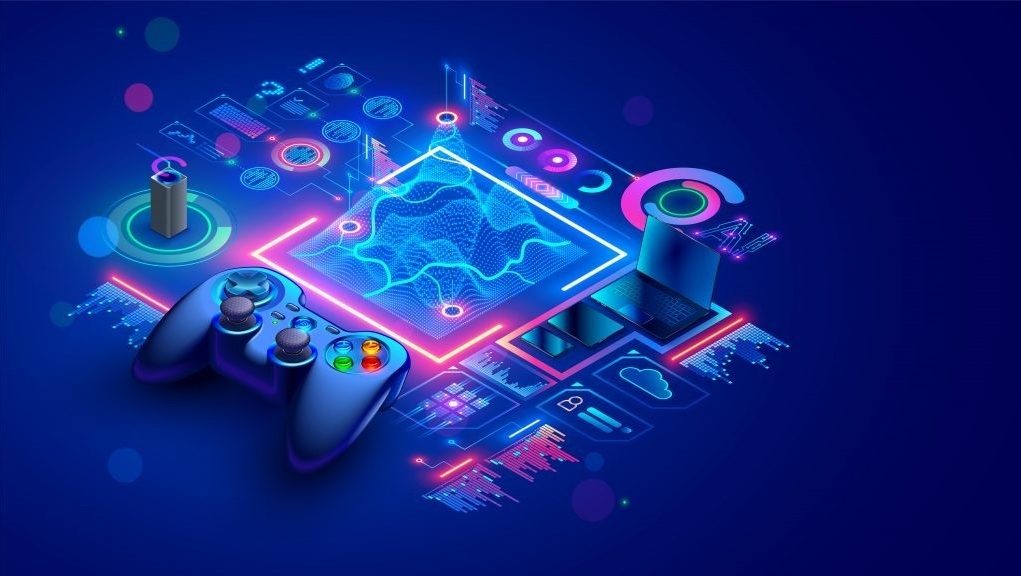The gaming industry is undergoing a massive transformation, thanks to blockchain technology and NFTs (Non-Fungible Tokens). In 2025, play-to-earn (P2E) games, in-game NFT assets, and decentralized gaming economies are reshaping how players interact with games. From owning unique digital assets to earning real-world money, NFTs are redefining the gaming experience.
In this blog, we’ll explore how blockchain and NFTs are changing the gaming industry, their benefits, challenges, and what the future holds.
1. What Are NFTs and How Do They Work in Gaming?
NFTs (Non-Fungible Tokens) are unique digital assets stored on the blockchain, ensuring ownership, authenticity, and scarcity. Unlike regular in-game items, NFTs:
🔹 Cannot be duplicated or altered
🔹 Are owned by players, not game developers
🔹 Can be bought, sold, and traded across different platforms
How NFTs Work in Gaming:
🎮 Players earn or purchase NFTs → 🏆 NFTs represent in-game assets (skins, weapons, characters, land, etc.) → 💰 Players sell or trade NFTs for cryptocurrency or real money
This system is revolutionizing the gaming industry, making in-game assets valuable beyond the virtual world.
2. How Blockchain and NFTs Are Transforming Gaming
🛡️ 1. True Ownership of In-Game Assets
Traditionally, when players buy skins, weapons, or other items in games like Fortnite or Call of Duty, they don’t actually own them—developers do.
With NFTs, players truly own their in-game assets, meaning they can:
✔️ Sell them for profit
✔️ Transfer them between games
✔️ Use them in multiple blockchain-powered platforms
This decentralization shifts power from game companies to players.
💰 2. Play-to-Earn (P2E) Gaming Model
The play-to-earn (P2E) model rewards gamers with cryptocurrency and NFTs for their in-game efforts. Instead of just spending money on games, players can earn money while playing.
🎮 Top P2E Games Utilizing NFTs:
- Axie Infinity – Players earn NFTs and cryptocurrency by battling creatures.
- Decentraland – Users buy, sell, and develop virtual real estate as NFTs.
- The Sandbox – A metaverse where players trade NFT-based virtual assets.
This new model is making gaming a viable source of income for many players worldwide.
🌍 3. Interoperability: NFTs Across Multiple Games
One of the most exciting aspects of blockchain gaming is interoperability—allowing players to use their NFT assets across different games.
Example:
If a player owns a rare NFT sword in Game A, they could potentially use it in Game B (as long as both games support blockchain integration).
This opens up possibilities for a universal gaming economy where assets retain value beyond a single game.
🎨 4. Enhancing Game Customization & Creativity
NFTs allow players to create, customize, and even monetize their own digital content.
✔️ Players can design and sell custom skins, weapons, and characters.
✔️ Game developers can allow community-driven content creation through NFTs.
✔️ Virtual worlds like The Sandbox and Roblox encourage players to build and sell unique gaming experiences.
This empowers creators and gives players more control over their in-game experiences.
3. Challenges Facing NFTs in Gaming
Despite the exciting innovations, NFT gaming still faces some major challenges:
⚠️ 1. High Transaction Fees & Scalability Issues
🔹 Problem: Some blockchains, like Ethereum, have high gas fees that make transactions expensive.
🔹 Solution: Layer 2 solutions (e.g., Polygon, Immutable X) help reduce costs and increase speed.
🤔 2. Concerns Over Sustainability
🔹 Problem: Some blockchain networks consume large amounts of energy, raising environmental concerns.
🔹 Solution: Newer eco-friendly blockchains (like Solana and Tezos) offer low-energy alternatives.
🛑 3. Market Volatility & Speculation
🔹 Problem: The NFT market can be unpredictable, with prices fluctuating rapidly.
🔹 Solution: Players should research projects carefully before investing in gaming NFTs.
4. The Future of NFTs in Gaming
The gaming industry is moving toward a fully decentralized, player-driven economy. Here’s what we can expect in the coming years:
🔮 AAA Game Studios Adopting NFTs – Companies like Ubisoft and Square Enix are already exploring blockchain integration.
🔮 More Interoperable NFT Ecosystems – Games will support cross-platform assets, making NFTs more useful.
🔮 Metaverse Expansion – Virtual worlds will integrate NFTs for real estate, characters, and accessories.
🔮 Regulatory Frameworks – Governments may introduce rules to protect players and investors in NFT gaming.
As blockchain technology advances, NFT gaming will continue to evolve, offering new opportunities for players, developers, and investors.
5. Should You Invest in Gaming NFTs?
If you’re considering investing in NFT-based games, here are some tips:
✅ Research the game’s development team – Ensure it’s backed by reputable developers.
✅ Check blockchain compatibility – Some NFTs work only on specific platforms.
✅ Evaluate long-term value – Avoid hype-driven projects with no real use case.
✅ Start small – Don’t invest more than you can afford to lose.
NFT gaming is an exciting but volatile space, so careful research is essential before diving in.
Conclusion: Are NFTs the Future of Gaming?
Blockchain and NFTs are revolutionizing the gaming industry by giving players true asset ownership, play-to-earn opportunities, and cross-game compatibility. While challenges like scalability and volatility exist, the potential for decentralized gaming economies is undeniable.
As more game developers adopt blockchain technology, NFT gaming could become the standard in the industry. Whether you’re a gamer, developer, or investor, NFTs are opening up new possibilities in the gaming world.
📢 What are your thoughts on NFTs in gaming? Are they the future or just a passing trend? Let us know in the comments! 🚀🎮



































